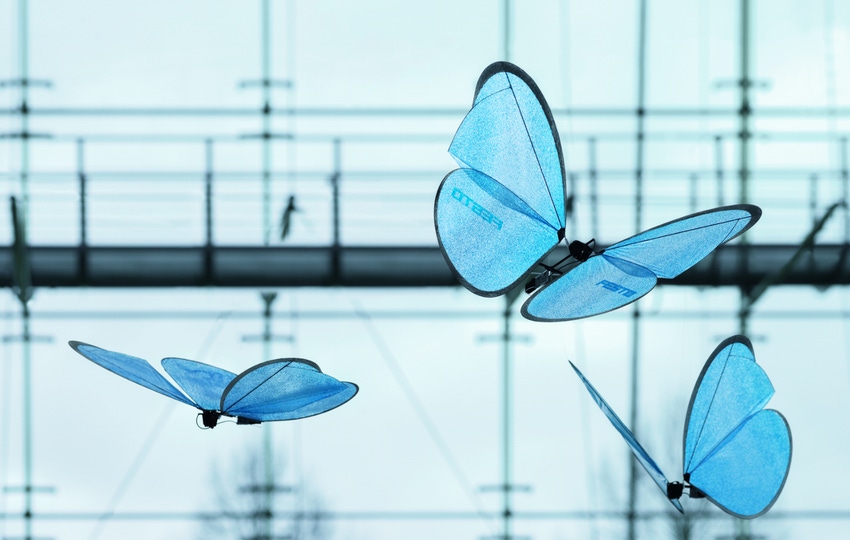
Fish fins, elephant trunks and now butterflies. Inspiration for creative packaging automation solutions comes from many of the same motions we see in nature. Animals and insects do similar tasks—and quite efficiently—that are done in a factory: gripping, moving and positioning of goods. What can we learn from them?
Free demonstrations of bionic butterflies at PackEx Montréal 2016 (Nov. 30-Dec. 1; Montréal) will show how Festo Corp.’s unique research and development platform—the Bionic Learning Network—is advancing technology for the factory of the future.
Festo is a global manufacturer of process control and factory automation solutions, including those for packaging operations. Headquartered in Esslingen, Germany, the company has been serving Canada for more than 40 years, with offices in Toronto, Montréal and Quebec City.
The eMotionButterflies—aka ultralight flying objects (UFOs!)—are equipped with an indoor Global Positioning System (GPS) and an infrared camera, allowing several to autonomously fly around together without colliding.
The butterflies beautifully illustrate two automation principles needed for the factory of the future:
1. How technology can enable man and machine to safely work in tandem.
2. How control technology can function in a small space and be energy efficient.
Multiple demonstrations both days of the PackEx Montréal show—Wed., Nov. 30, and Thurs., Dec. 1—will take place at Booth #1321, in a cordoned-off area to the right of Center Stage.
Jaclyn McCann, marketing and communications supervisor for Festo, explains more:
“Festo believes in investing in product innovation. Every year, we invest 8% of our turnover into research and development. Part of that R&D is investing in the Bionic Learning Network. The idea behind this platform, which was established in 2006, is we take inspiration from nature for our future technology in factory and process automation.
“Here’s a good example for the packaging industry:
“One of the first bionics we looked into was the principle of the fish fin. Normally when you push against an object, it moves away from you. But the fish fin, when you press in, wraps around in a gripping motion. We took this technology and adapted it to another bionic that we had done, which was the elephant trunk—and we created a robotic arm that didn’t need to be guarded, with this fin gripper attached to the end-of-arm tooling.
“With adaptive fin gripper fingers, we are able to grasp and wrap around delicate complex objects you can’t traditionally grab with an end-of-arm gripper, such as apples or eggs, and even light bulbs. Because with a traditional gripper, when you do that, you would break the object or you would have to use vacuum, which may not suit the application need.”
Additionally, Festo will have a truck parked nearby onsite. Inside it, the company will showcase advanced manufacturing solutions available today in its core business areas of pneumatic, electric and process automation.
A private hospitality room will also be available for one-on-one conversations to discuss your packaging automation needs.
Register now for PackEx Montréal 2016.
About the Author(s)
You May Also Like




